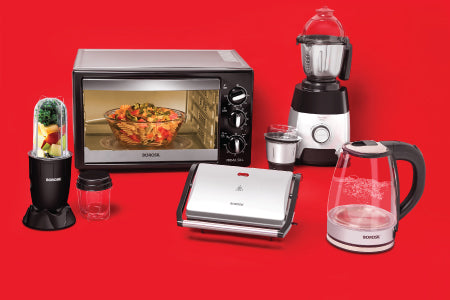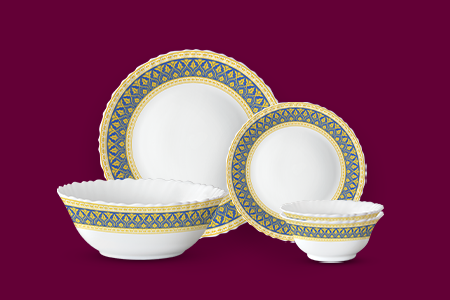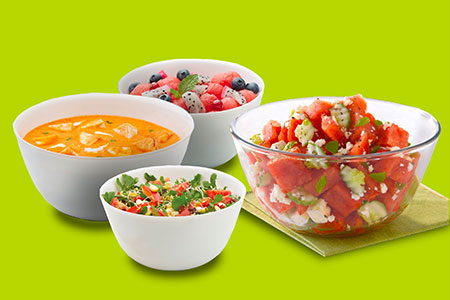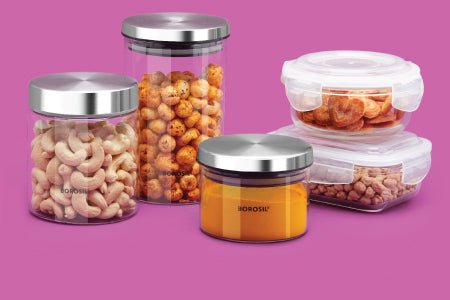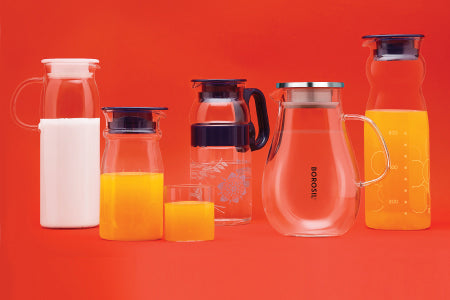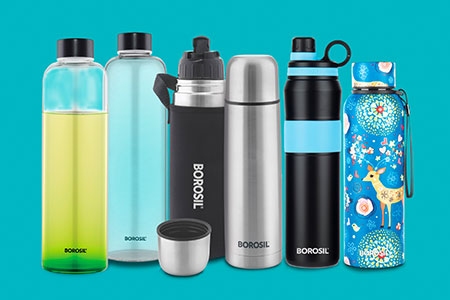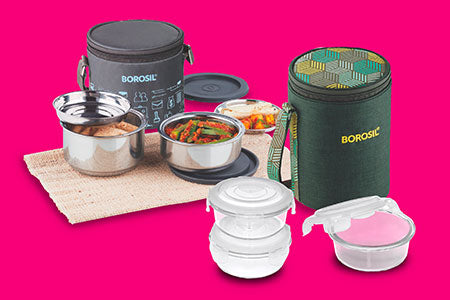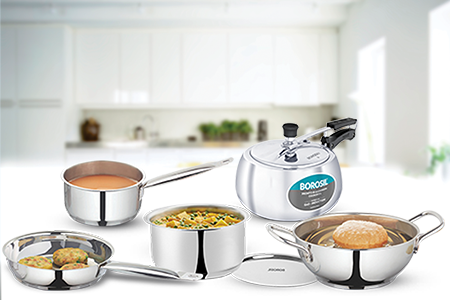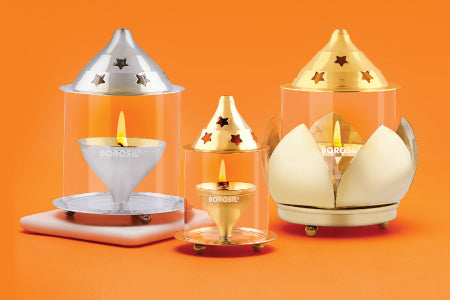
Effective Ways To Clean Your Non Stick Tawa
Say Goodbye to Residue: Cleaning Your Non-Stick Tawa
Ever wondered how to clean tawa effectively? You're not alone! Whether you're a kitchen newbie or a seasoned chef, we all want our cookware to sparkle. But let's be real—non-stick tawas can collect stubborn gunk that's tough to scrub off.
Taking care of a non-stick tawa is like pampering a delicate beauty. It doesn't like rough scrubs or harsh chemicals that can ruin its non-stick magic. To keep your tawa shining and lasting longer, you've got to master the art of washing it right.
If your tawa tells tales of burnt rotis and sticky messes, fear not! Dive into the best ways to clean it without making rookie mistakes. Stick with us to learn how to wash tawa and keep it gleaming, making cooking fun, easy, and super clean!
Quick and Simple Methods on How to Clean Non Stick Tawa at Home
From using non-stick tawa to making dosa or roti, cleaning it properly can be difficult sometimes. However, with some pantry ingredients and the right methods, you can ensure the longevity of the non-stick coating. Below is a detailed overview of how to clean a non-stick tawa at home.
Regular Gentle Cleaning
If you are someone who uses non-stick tawa every day, then using a mild detergent and warm water can help you maintain the properties and texture of the non-stick coating for years.
Method:
- Always ensure that your tawa is not hot before cleaning to prevent warping and damage to the coating of the surface.
- Use a wooden or silicone spatula to gently scrape off food particles from the surface of the tawa.
- Thoroughly wet your tawa with warm water and pour a few drops of mild detergent on its surface.
- Use a soft sponge and gently scrub the surface to clean the tawa. Avoid using hard scrubbers or metal pads to avoid scratches on the non-stick coating.
- Wash the tawa thoroughly with warm water to remove all the traces of detergent and food particles. Dry the tawa immediately after washing with a soft cloth to prevent rusting and bacterial growth.
- Note: If your tawa has stubborn stains or residue, soak your tawa in warm water and detergent solution for 15 minutes to loosen the residue below scrubbing it.
Salt and Oil Cleaning
Worried about how to clean non stick tawa with tough and burnt residue, try the traditional method of salt and oil cleaning. Salt is an incredible abrasive that is gentle yet effective in removing all kinds of residue and stains.
Method:
- Slightly heat the non-stick tawa on low flame and sprinkle a generous amount of kosher or sea salt on the surface of the tawa.
- Take a paper towel or a soft cloth and rub the salt on the surface in circular motions to allow tough residues to loosen while allowing the salt to work its magic.
- Now add a few drops of oil and continue to rub. This will further loosen the residue and maintain the non-stick properties of the tawa.
- Wipe the tawa with a clean paper towel or soft cloth and remove all the debris.
- If required, you can wash the tawa with warm water and air dry it completely before using it again or storing it.
Baking Soda and Vinegar
Looking for an answer on how to clean dosa tawa that has become greasy with oil and batter? Well, using baking soda and vinegar can remove all stains and residues effectively.
Method:
- As mentioned above, ensure your tawa is not hot and scrape off all the food particles using a spatula.
- Sprinkle an adequate amount of baking soda on the surface of the tawa.
- Pour a small amount of white vinegar on the surface of the tawa. Wait for the mixture to bubble and fizzle. It will loosen the residues and remove greasiness from the surface.
- Let the mixture rest on the tawa for 10 minutes.
- Use a soft sponge and gently scrub the mixture on the surface in circular motions.
- Once all the debris is removed, rinse the tawa with warm water and immediately dry it to avoid bacterial growth.
Mistakes to Avoid When Learning How to Clean Tawa Pan
High heat is very likely to damage the tawa. So, avoid putting your tawa on high flame to burn the food particles, as it can damage the non-stick coating.
When finding out how to wash non stick tawa, always remember timing is crucial. Soaking the tawa for too long in the detergent and water solution can weaken the non-stick coating. 15 minutes is sufficient to clean the tawa effectively.
Opt for mild dish soap or detergents, as products with harsh chemicals can deter the nonstick coating of the tawa over time.
Do not use metal utensils on the surface of nonstick tawa. Wooden, plastic, and silicone utensils are best friends of non stick cookware as they do not damage the non stick properties.
Stacking multiple cookware with non-stick tawa without any layer in between can cause potential damage. Always ensure that a paper towel or soft cloth is placed between two utensils.
Final Thoughts
Keeping your non-stick tawa in pristine condition is effortless with a few quick and simple methods. Whether you're learning how to clean non stick tawa or struggling with tough stains, the above-mentioned tips will help you keep your cookware effective and long-lasting. Regular cleaning with mild detergents, avoiding metal utensils, and using vinegar for stubborn stains are key. So, incorporate these methods and get a clean and hygienic non-stick tawa for all your cooking experiments.
FAQs
Can I put my non-stick tawa in the dishwasher?
While some non-stick tawas are dishwasher safe, it is generally recommended to hand wash them to extend the life of the non-stick coating.
How often should I clean my non-stick tawa?
You should clean your non-stick tawa after each use to prevent food residue build-up and to maintain the efficacy of the non-stick coating.
What should I do if the non-stick coating starts to peel off?
If the non-stick coating starts to peel off, it is best to replace the tawa. Cooking with a damaged, non-stick tawa can increase the chances of you consuming the coating particles.



